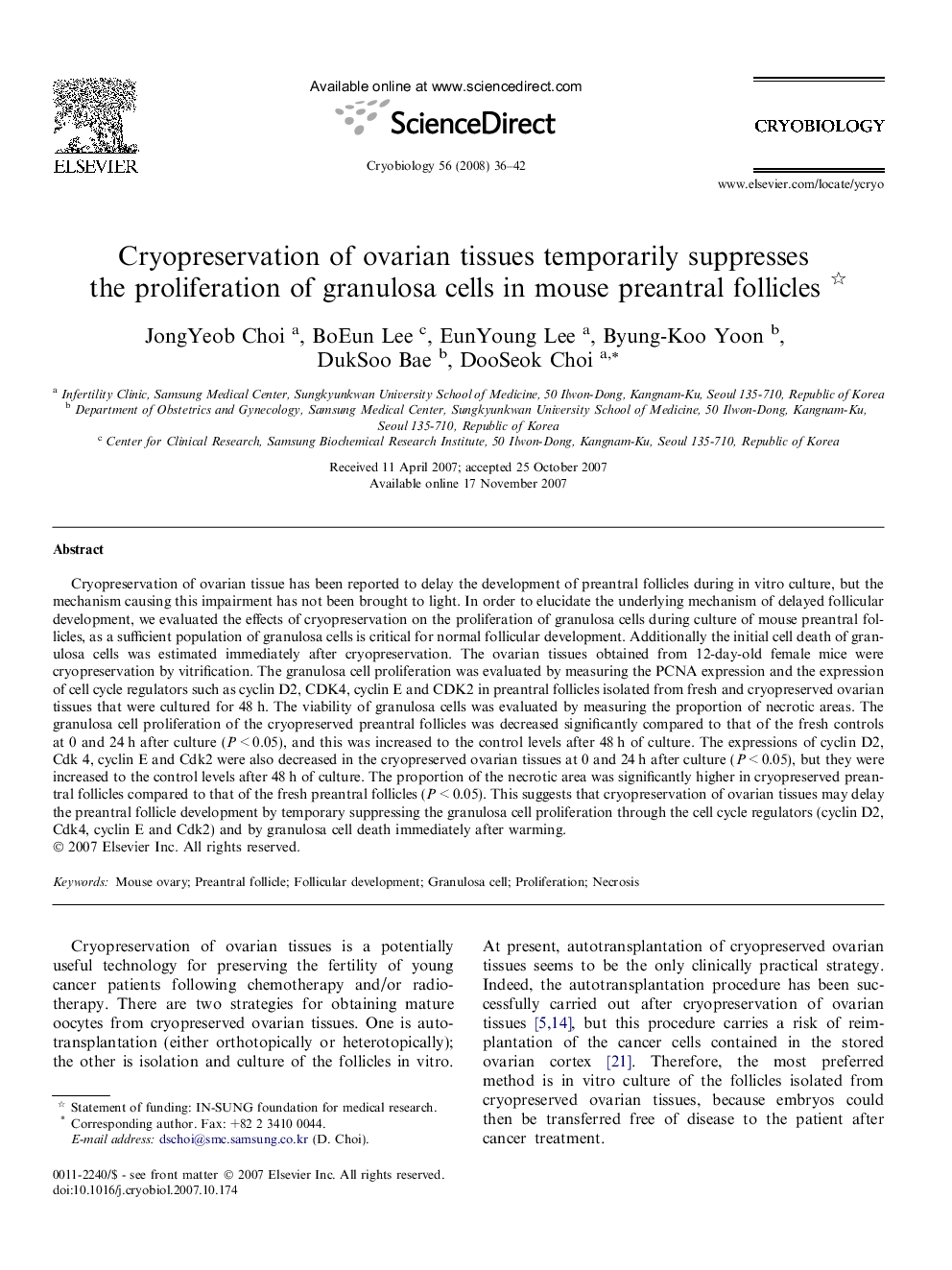| Article ID | Journal | Published Year | Pages | File Type |
|---|---|---|---|---|
| 2169173 | Cryobiology | 2008 | 7 Pages |
Cryopreservation of ovarian tissue has been reported to delay the development of preantral follicles during in vitro culture, but the mechanism causing this impairment has not been brought to light. In order to elucidate the underlying mechanism of delayed follicular development, we evaluated the effects of cryopreservation on the proliferation of granulosa cells during culture of mouse preantral follicles, as a sufficient population of granulosa cells is critical for normal follicular development. Additionally the initial cell death of granulosa cells was estimated immediately after cryopreservation. The ovarian tissues obtained from 12-day-old female mice were cryopreservation by vitrification. The granulosa cell proliferation was evaluated by measuring the PCNA expression and the expression of cell cycle regulators such as cyclin D2, CDK4, cyclin E and CDK2 in preantral follicles isolated from fresh and cryopreserved ovarian tissues that were cultured for 48 h. The viability of granulosa cells was evaluated by measuring the proportion of necrotic areas. The granulosa cell proliferation of the cryopreserved preantral follicles was decreased significantly compared to that of the fresh controls at 0 and 24 h after culture (P < 0.05), and this was increased to the control levels after 48 h of culture. The expressions of cyclin D2, Cdk 4, cyclin E and Cdk2 were also decreased in the cryopreserved ovarian tissues at 0 and 24 h after culture (P < 0.05), but they were increased to the control levels after 48 h of culture. The proportion of the necrotic area was significantly higher in cryopreserved preantral follicles compared to that of the fresh preantral follicles (P < 0.05). This suggests that cryopreservation of ovarian tissues may delay the preantral follicle development by temporary suppressing the granulosa cell proliferation through the cell cycle regulators (cyclin D2, Cdk4, cyclin E and Cdk2) and by granulosa cell death immediately after warming.
